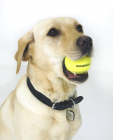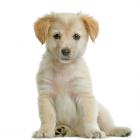Labrador
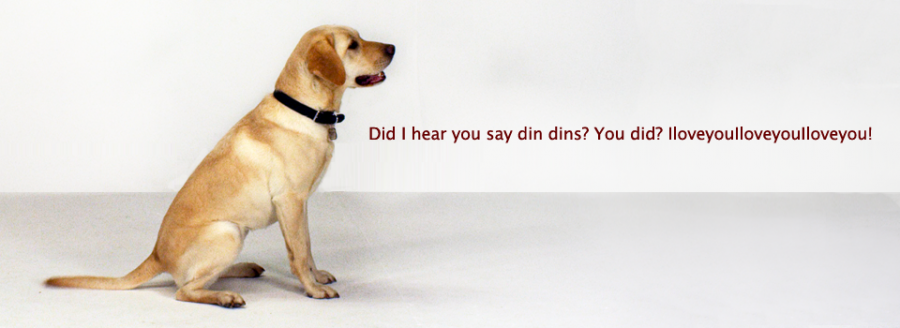
In my own words
Hello, awfully pleased to meet you, haven’t we met somewhere before? Got any treats? Gosh, just can’t stop wagging my tail. Whoops! Was that cup and saucer on the coffee table expensive? So sorry. Got any treats?
No honestly, I’m not that bad. I’m just the BFG of the doggy world. I love everybody! I especially like people who feed me, so I need good long walks every day to work off the calories. Gosh I’m getting hungry just thinking about food. Got any treats?
I adore children you know. I really know how to play and I can keep them amused to hours. But if Dad wants to take me hunting, I’m just as happy to do that. I have a very soft mouth and can hold a raw egg without breaking it. I come under the category “Gun Dog”, which is odd for someone who so loves being the family pet. Is it dinner time yet?
My ideal owner(s)
Active Families, with or without children
Hunters, anglers
Runners, cyclists
Campers, walkers
Any outdoor sports people
What they say about me
Beautiful and waggy
Short, thick tail (ideal for dusting coffee tables!)
Natural retriever
Fun loving, open hearted
Easy going companion
Mellow and gentle
Good with children, patient with little ones
Please read on, to find out more about me, and whether I will be someone you can be happy with.
Is this Labrador Retriever for you?
Test your knowledge about the Labrador Retriever
Information essential about the Labrador
Kennel Club Group: Gundog
Size:
Large: Male 22 – 24” (57 – 62 cm) to shoulder, Female 20 – 23” (55 – 60 cm). Males should weigh between 58 and 72 lb (29 and 36 kg), Females between 50 and 64 lb (25 and 32kg).
Popularity:
Even people who have never owned a Labrador Retriever say they love them! They are the UK’s favourite breed, with twice as many Labs as the next two favourites, the German Shepherd and the Golden Retriever. They are also the most popular breed in the USA, Australia, New Zealand, Canada and Israel. It’s no wonder that the Andrex Puppy is a Labrador Retriever!
Breed History:
The modern Labrador Retriever has its origins in Newfoundland, on the East Coast of the United States. There, the St. John’s Water Dog, was used by the local fishermen to retrieve nets from the sea, carry ropes, tow dories and generally lend a helping hand. This breed was a hybrid of random working breeds brought to America from Europe in the 16th Century. To look at, they were small, skinny, and had a white chest, feet, chin and muzzle (tuxedo markings). Even today, these markings will show up in a small patch of white on a Lab’s chest (mediallion) or the odd white toe or white whiskers on the muzzle.
By the late 1800’s, the development of the modern Labrador was well under way, thanks to breeding programmes created principally by the Earls of Malmesbury and the Dukes of Buccleuch (say, “B’cloo”). The legacy of the St. John’s Water Dog is evident in the modern Lab’s thick, short, waterproof coat, its strength and power, webbed toes (ideal for retrieving from water), athleticism and relaxed temperament.
Character:
Your Lab is sharp and alert, though gentle natured and moderately intelligent. Although one of the friendliest of the breeds, however their natural welcoming exuberance needs to be controlled right from puppyhood or that charming, bouncy puppy might one day knock someone over with an overexcited greeting. Trainable, patient and obedient, however they don’t make the best guard dogs because they are too friendly and trusting. They will bark a warning when someone comes to your home, or they hear something unfamiliar that they can’t see, but that’s about it. Labs need plenty of exercise or they become overweight and listless – your Lab is a natural family member, never happier than when going somewhere and doing something active with his “gang”.
Temperament:
Ranked 7th in Stanley Coven’s book “The Intelligence of Dogs”, Labs are active, enthusiastic, friendly, merry, loyal and loving. They love to be with you, whether you are going for a walk, a run, camping, hunting, whatever. They will play fetch forever! Your Lab is reliable, even tempered, willing and patient and therefore makes an ideal playmate for children. They love attention, parties and family occasions (mind that wagging tail at coffee table height!) and are good with other dogs and pets. The one thing they are not good at is being left alone for too long, even in the garden, as the lack of attention will lead to boredom and listlessness, and can lead to destructive behaviour. Labs have even been known to escape, looking elsewhere for company. They will even vanish when out on a walk, if a good scent grabs them by the nose, so clear identification is recommended, either by a collar tag or a microchip, preferably both.
Labs have a great sense of smell, and love to hunt. They have a delightfully soft mouth that will hold an egg without breaking it, making them ideal for retrieving waterfowl. Watch out for your shoes and the children’s toys, because your Lab likes to practice his retrieving skills at home and will often bring you “gifts”. Good with children of all ages, and always fun loving, Labs can be boisterous when young – they mature at around three – so firm discipline is needed early on. They often show very puppyish behaviour right up to maturity and beyond, which is not to be mistaken for hyperactivity.
Labs love to play fetch, Frisbee and are excellent at fly-ball. They are often used for Search and Rescue, detection and therapy work, such as care home visiting. Forever with his mind on his stomach, your Lab will beg in a most charming but persistent manner, so you will need all your powers of resistance if you are not to give in.
Conformation:
A good Labrador should have a broad, clearly defined head, with hanging ears, and alert, intelligent eyes with a friendly expression. The nose should be thick, with a broad muzzle. The neck should be strong, and the body solid and well built, but slim. Labs tend to gain weight if not exercised enough and fed too much – they don’t need nearly as much to eat as they think they do. The coat has two layers; a short, dense, water resistant outer coat, and a soft downy undercoat for warmth. The tail is straight and otter-like, tapering at the end to flick off water. Labs have webbed feet which makes them great swimmers.
There are two types of Labrador, the Conformation (also known as the English, Show or Bench) and The Field (American or Working). We will call them the Show dog and the Working dog here. The Show Labrador tends to be shorter and stockier than its Working cousin, with a fuller face and a calmer, more placid nature. The Working is a little taller, and more lightly built. The temperament of the Working Lab tends to be livelier than the Show Lab, and will make a better sports companion. If you decide to go for a Working type Lab, try to avoid very long noses, thin heads and long legged, rangy bodies, as they probably come from a poor line, and may have other unseen defects
Colour:
Labradors are registered in three colours: Black, Yellow and Chocolate. Black Labs should be solid black, though some have white hairs on their chest (known as a medallion), or on their toes, tails and elsewhere. Yellows come in anything from pale cream to a vivid copper, known as “fox-red”. Blacks and Chocolates both have noses that match their coat, but yellows, though normally born with black noses, occasionally arrive with pink ones. Some black noses can change seasonally, and this is known as a “snow nose” or a “winter nose”. Another, quite rare, Yellow variation is the Dudley, which has a pink nose and pink rims around the eyes. Many Labs carry genes for different colours which means the litters of matching parents can result in puppies of different colours. Like a box of chocolates, “You never know which one you’re going to get” (apologies to Forrest Gump.)
Training:
Your Labrador is easy to train. Food rewards work a treat, and they respond well to vocal commands and gestures, though time and patience is needed to teach these skills when young. “Sit”, “Down” and lead training are essential right from the start, because of their boisterousness. To a Lab, “walkies” is just a perfect opportunity to say hello to all his friends and complete strangers too, so you need to be in control.
Care:
Your Labrador will only need an occasional brush – once a week is enough to keep the coat soft and shiny. Lack of exercise and obesity can lead to a dull coat and skin, so the answer is plenty of fresh air and exercise.
Health:
A slim, active Labrador should stay healthy and live to at least 10 - 12 years. They have a tendency to go grey around the muzzle quite young, but this is no indication of any problems. Your main concern will be your Lab’s weight. Because they love their food so much it is very easy to think you are not feeding them enough. Don’t listen – he’s telling porky pies! Lots of exercise and a regular diet should keep him fit and well. Treats as rewards are ok, but not at the table or any other time.
There are some hereditary disorders to watch out for, mainly Hip and Elbow Displasia. It’s a good idea to ask your breeder what your puppy’s parents’ hip scores are, and if you breed from your own dog, have him or her hip scored before you decide to continue. Luxating Patella (where the knee, or stifle, keeps dislocating itself and then clicking back into place) is quite common. Eye problems and deafness can also be inherited, and certain auto-immune diseases. Quite common is Exercise Induced Collapse that can happen after short bouts of exercise, where the dog becomes overheated (hyperthermia), disorientated and weak, leading to collapse. There is also Hereditary Myopathy, a disease of the muscle fibres which is fortunately rare.
If you choose your puppy carefully, from a good bloodline and a reputable breeder, you should not have any problems beyond those which happen to all of us as we get older. Your Lab will remain a happy-go-lucky playmate for the whole family all of his life.
You may also like:
Labradors looking for a home in UK »
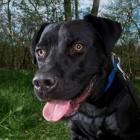
Labradors and their owners »



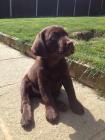
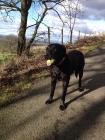
If you like Labradors, you may be interested in breeds of the same size »
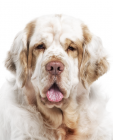
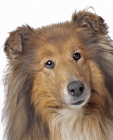
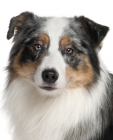
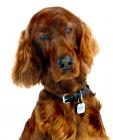
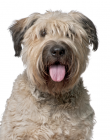
If you like Labradors, you may like other breeds with similar characteristics »

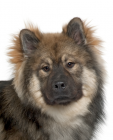
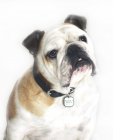
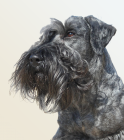
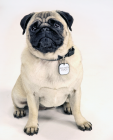
If you like Labradors, you may be interested in these other gundog dogs »
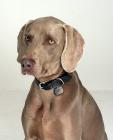

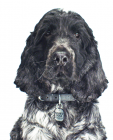
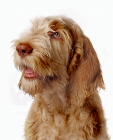
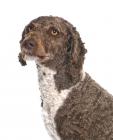
Advice on choosing your breed »
Find an animal shelter or rescue home where a Labrador is waiting for a new home »
The following grid gives a fast track review which covers all breeds. You can apply it to help you decide if a Labrador Retriever is suitable for you, the environment where you live, your personality and your lifestyle. On the grid, 1= strongly disagree, and 5= strongly agree. For example, if you are looking for a dog that likes to swim, look down the list under Activities, and you will see that Labradors love water and are strong swimmers, scoring 5. If you want a playful companion, look down the same list, and you will see that Labradors love to fetch and hunt, and score 5. You might like to save or print off this section and keep it for reference while you check some other breeds before making your final choice.
Add your own ratings on this breed »
|
*PLEASE NOTE: All our breed profiles are general, and all dogs are individuals. Always talk to the breeders and meet the owners you are buying from. Try to meet the dog and its parents if it is a puppy in their home environment.








